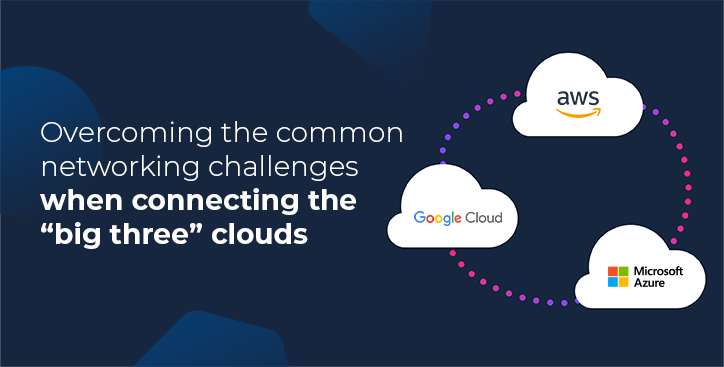It is not just network performance that is important to today’s CIOs and network managers. Critical IT workflows and network traffic are rapidly growing and changing all the time, which is why enterprise networking needs to be more flexible and responsive than ever before.
Here we look at a number of scenarios where a more agile networking model could better support the needs of a business…
1.Responding to unpredictable events and disruption
 If the last few years taught businesses anything is that they need to be prepared for the unexpected.
If the last few years taught businesses anything is that they need to be prepared for the unexpected.
Nearly all industry sectors and organisations were – and remain – impacted by the global pandemic in some form. As many businesses accelerated their adoption of cloud-based services collaboration tools to support the influx of remote workers, traditional network services struggled to keep up.
Disruption can take many forms: be it responding to external market opportunities or threats, or adapting to internal business needs, such as mergers and acquisitions.
Moving to an agile networking model is one way businesses can ensure they are prepared in the future for these sudden shifts in network traffic.
2. Scaling into new markets
 Expanding your enterprise network into new countries can present considerable challenges for CIOS and network managers. It can also potentially be complex, costly and time consuming – particularly if you are looking to establish a direct, physical, point-to-point interconnection for your network at a local data centre.
Expanding your enterprise network into new countries can present considerable challenges for CIOS and network managers. It can also potentially be complex, costly and time consuming – particularly if you are looking to establish a direct, physical, point-to-point interconnection for your network at a local data centre.
Today’s network managers increasingly need to not only connect their enterprise data centres and headquarters to regional centres and branch offices, but also deliver access to public clouds and other mission-critical applications.
Using a Software Defined Interconnection platform, such as Console Connect, organisations can easily and rapidly scale into new markets by making on-demand and private connections to local data centres and clouds. This means they can also flex bandwidth to mean the growing needs of their new operations, instead of being locked into lengthy contracts with a local service provider.
3. Responding to seasonal demand
 Many industry verticals are subject to periods of seasonal demand. Some obvious examples include travel and hospitality, retail, construction and the public sector.
Many industry verticals are subject to periods of seasonal demand. Some obvious examples include travel and hospitality, retail, construction and the public sector.
These seasonal fluctuations in business often lead to an increase in critical IT workflows to the cloud. As businesses increase their dependency on cloud-based services, they need to think more carefully about how their networks are built to respond to these periods of peaks and troughs.
In particular, how do they ensure they have high service availability and bandwidth during periods of peak demand? And conversely, how do they plan for those periods of lower network usage and not end up paying for bandwidth they are not utilising?
Moving to a network service that is available on-demand overcomes this challenge by allowing an organisation to flex bandwidth up and down to meet the seasonal needs of a business.
4. Building a test environment
 Test environments are critical to the successful development of software, applications and other digital services.
Test environments are critical to the successful development of software, applications and other digital services.
Test environments enable DevOps teams to experiment and ensure that there are no software weaknesses or bugs without impacting their end users. DevOps teams typically require multiple test environments, including development, testing, staging and production.
For many companies, virtual hosting is the most convenient platform for deploying these test environments.
An agile networking model can help businesses easily tear networks up and down to support their access to the cloud during periods of testing. In fact the Console Connect software development team uses the platform to do just that when we are testing new platform capabilities on Google Cloud.
5. Ad-hoc projects and initiatives
 There are many different types of projects or initiatives that could create short-term spikes in demand for IT workflows for your organisation.
There are many different types of projects or initiatives that could create short-term spikes in demand for IT workflows for your organisation.
It could be a website migration, which may require switching servers or CMS platforms. Or it could be a longer term digital transformation initiative that involves introducing new processes and applications across your entire business.
Again, an agile networking model can help with the short-term requirements of these ad-hoc project and initiatives by giving network managers the ability to control and flex the network to meet the short-term needs of their business - all while delivering an improved network performance.


.jpg)





.jpg)

